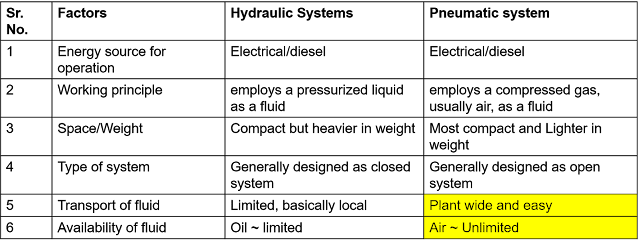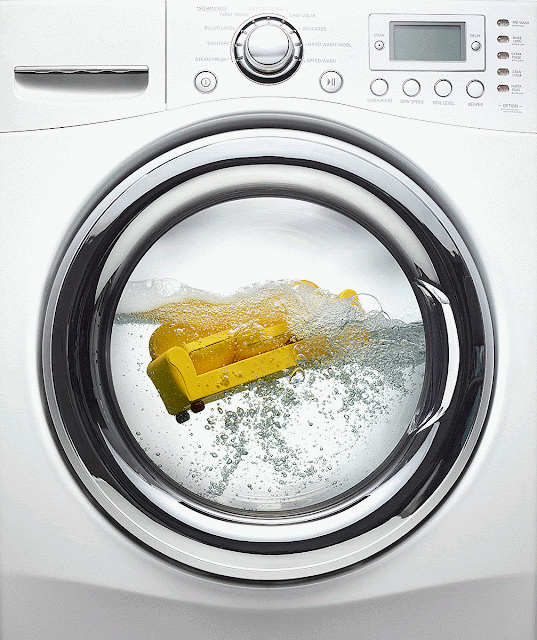Comparison of hydraulic and pneumatic systems
Comparison of hydraulic and pneumatic systems
It is important to consider various points for comparing pneumatic systems with hydraulic systems such as power level, noise level, cleanliness, speed, accuracy, temperature effects, etc. Principal advantages and distinguishing characteristics of pneumatic and hydraulic systems are listed below:
- Availability: Air is available everywhere in unlimited quantities.
- Transport: Air and hydraulic fluid can be easily transported over large distances through pipelines.
- Storage: Compressed air can be stored in a reservoir and removed as required. Hydraulic oil can be stored in accumulators.
- Temperature: Compressed air is relatively sensitive to temperature fluctuations, whereas hydraulic fluids are relatively insensitive.
- Explosion-proof: Compressed air offers minimal risk of explosion or fire.
- Cleanliness: Any unlubricated air which escapes through leaking pipes or components does not cause contamination.
- Components: The operating components of the pneumatic system are simple in construction and they are relatively cheaper
- Speed: Compressed air and hydraulic fluids are very fast working mediums. But the lightweight items can be operated faster with a pneumatic system.
- Adjustable: With compressed air and hydraulic components, speed, and force are infinite variables.
The disadvantages of using such systems are as follows:
- Preparation: Compressed air and hydraulic fluid require good preparation in order to remove the dirt and condensate.
- Compressible: It is not possible to achieve a uniform and constant piston speeds with pneumatic systems.
- Force requirement: Compressed air is economical only when the working pressure of 6-7 bar is maintained.
- Noise level: The exhaust air is noisy.
- Costs: Compressed air and hydraulic fluid are relatively expensive means of conveying power. However, the operating cost of the hydraulic system is less than a compressed air system with the same mechanical power.
Table below gives some comparisons of the various systems.





Comments
Post a Comment